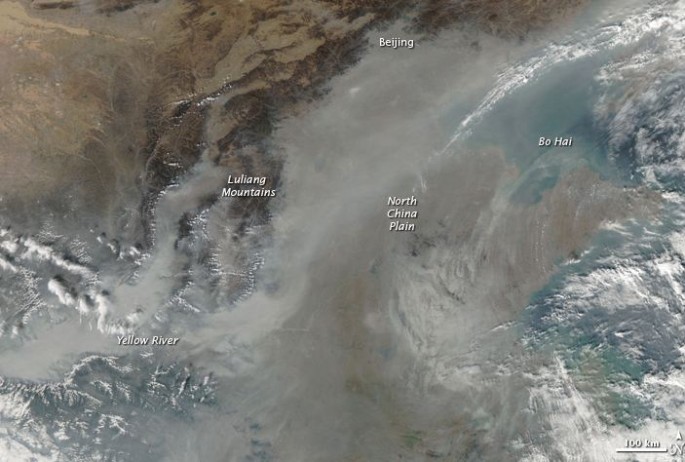The persistent haze in China is worsening what's called the urban heat island effect (UHI) plaguing many cities -- especially smaller cities in the midwest and northwest.
A new Yale-led study published in the journal Nature Communications sheds light on the surprising role haze plays in amplifying UHI, a process in which city centers tend to be significantly warmer than surrounding rural areas.
Scientists have always suspected that haze (or aerosol particles) play a role in amplifying UHI, said Xuhui Lee, a professor of meteorology at the Yale School of Forestry & Environmental Studies (F&ES) and senior author of the study.
Now they have evidence that in China -- unlike the U.S. -- haze is a significant driver of UHI.
The study also highlights the paradoxical nature of haze, and the challenges scientists face in isolating its effects on climate change. Smaller aerosol particles that pose public health risks such as asthma actually cool surfaces and reduce UHI by blocking sunlight. But larger aerosol particles radiate heat in the form of long-wave radiation, thus increasing local temperatures.
"When people talk about aerosols, particle size matters a lot," said Lee.
Previous research by Lee and his colleagues showed that UHI in the U.S. and Canada appears to be driven by a lack of vegetation, especially trees, which are highly effective in dissipating heat through convection. But when they attempted to replicate their experiment in China, the model performed poorly.
At first they thought it was due to the structure of Chinese cities, where there is more vertical stacking as opposed to the sprawling nature of cities in the U.S. Instead, they found a strong correlation between the amount of haze and an increase in heat.
Cities with more haze pollution had an amplified UHI effect.
Even more surprising, they found the greatest UHI in midwestern and northwestern small to mid-sized cities, not in the massive cities located along China's east coast.
China's semiarid midwestern and northwestern cities have more large aerosol particles due to road dust and coal combustion that create a thick haze layer and result in a net warming of about one-degree Celsius. Lee even speculates stir-fry cooking contributes to the UHI.
There are several important implications of this research, said Lee. The first is that aerosol pollution must be reduced.
"Cleaning up has a co-benefit," he said. "It helps improve human health, but it also helps to cool the local climate."
Second, researchers must improve the ability of models to quantify the effects of aerosols on climate change.



























